Learn about 22 Shade Tolerant Succulents that you can grow in the shady spots of your garden and indoors!
Succulents are the most trendy plants. All of them are easy to grow, low maintenance and showy. They grow best in warm conditions and full sun. However, there are Succulents that Grow in Shade. We’ve added 22 of them that you can grow indoors or in shady corners of your garden!
1. Snake Plant (Editor’s Choice)
Botanical Name: Sansevieria trifasciata
Snake plant can grow easily in the shady corners, the plant may lose its striking color in deep shade but survive. We also added it in our list of Best Plants that Grow in Indirect Sunlight. Also known as Mother-in-law’s Tongue, the snake plant is very low maintenance and thrives on neglect. Surely, it is one of the best succulents you can grow in the shade.
Growing Tips
- Choose the size of the pot, according to the plant’s size. It doesn’t require a large pot.
- Do not overwater! This plant has low-watering needs, keep it on a drier side.
- Plant in a well-draining medium that doesn’t hold the moisture.
2. Aloe
Botanical Name: Aloe (Genus)
Some dwarf and hybrid aloes and varieties like soap aloe, aloe vera, and krantz aloe can grow well in shady conditions. Aloe plants prefer full sun to part sun position to grow, but they can tolerate bright shade. Moreover, in hot climates, they don’t mind living in deep shade.
Growing Tips
- Water only when the soil turns dry.
- Find the spot where the aloe plant will receive at least a couple of hours of direct sunlight daily.
- Regular removal of pups is important to save these plants from pot bound situation.
- Get some aloe growing tips here!
3. Zebra Cactus
Botanical Name: Haworthia fasciata
Zebra cactus is an exceptionally showy houseplant. Its attractive fat foliage has striking horizontal stripes. This low maintenance plant and can be grown outdoors or indoors, in the shade easily. Due to its low height (below 6 inches), you can grow it in teacups, mini pots, cans, and many other unique planters.
Growing Tips
- Zebra cactus has shallow roots. You can easily grow it in pots smaller than 6 inches.
- The plant grows slowly and doesn’t need repotting for a long time.
- Although the plant grows in bright shade, if possible, provide exposure to light sunlight.
Also Read: Growing Succulents in 8 Infographics
4. Burro’s Tail
Botanical Name: Sedum morganianum
Burro’s tail (Donkey’s Tail) is trailing succulent and especially looks great in hanging baskets. This succulent has rows of trailing fleshy leaves of gray-green color, in the shape of the teardrop. This plant does best in partial shade when it gets the morning sun but grows well in full bright shade.
Growing Tips
- Use the soil that is specially formulated for cactus and succulents.
- Do irregular watering, after a week or so. Like all succulents, it needs water when the top layer of soil dries out.
- Fertilize the plant using a balanced 10:10:10 fertilizer for optimum growth.
- This plant should not be disturbed from its place due to its delicate leaves.
5. String of Bananas
Botanical Name: Senecio radicans
Its long growing tendrils of mini banana-like leaves dangling down from the shelves and hanging planters are perfect for the bright corner in your home. If growing outside, keep it in bright shade.
Caveat: The plants of the Senecio genus are toxic to pets.
Growing Tips
- Provide bright shade.
- Avoid overwatering
- Water deeply but only when the soil becomes dry to touch.
- Plant in the well-draining porous soil in small decorative pots.
6. Crown of Thorns
Botanical Name: Euphorbia milii
Crown of Thorns never stops blooming if exposed to the full sun. But, surprisingly, it’s one of the best shade succulents as well. The only drawback of growing it in the shade is it stops flowering. Although, the structure and foliage of the plant still look attractive. It can be grown both indoors and outdoors.
Caveat: All parts of this plants are toxic.
Growing Tips
- Keep the plant in partial shade. It can tolerate full shade if it receives all day long bright indirect sunlight.
- It’s low maintenance and doesn’t require regular watering.
- Do balanced watering and keep the plant on a drier side.
- Leaves will start to fall off if you will leave the plant in a bone-dry condition for a long time.
7. Ponytail Palm
Botanical Name: Beaucarnea recurvata
Ponytail palm or elephant’s foot palm is not a palm but a succulent. The water is stored in its swollen trunk, which resembles the elephant’s foot. It is one of the most impressive and largest succulents to grow either as a houseplant or outdoor plant. Ponytail palm grows best in full sun to partial sun but doesn’t mind the shade.
Growing Tips
- Plant it in semi-shade in a cool climate. It will keep growing in full shade location that is warm and receiving all day long bright indirect sunlight in a hot climate.
- Do not water regularly and give time to the soil to dry out between watering spells.
- Ponytail palm is a slow grower and needs repotting after a long time.
8. Fox Tail Agave
Botanical Name: Agave attenuata
Also known as Lion’s Tail or Swan’s neck, it is straightforward to grow agave. The Fox Tail agave is known for its shade tolerance. It can grow about 5 feet tall and wide and invites interest even when it is not blooming due to its rosette shaped structure of leaves.
Growing Tips
- This plant can tolerate both underwatering and overwatering.
- Water thoroughly, only, when the topsoil is dry.
- It loves warm climatic conditions but will tolerate temperature as low as 28 F (-2 C).
9. Bear Paws
Botanical Name: Cotyledon tomentosa
The beautiful showy and furry leaves Cotyledons can be divided into two groups. One group consists of deciduous plants with summer growing period whereas the other one is made up of plants with winter growing period, they shed their leaves in summer. These plants are perfect for small containers as they seldom grow above 1 foot tall.
Growing Tips
- Plant bear paws in partial shade, they become week and leggy in deep shade.
- If kept dry and frost free they live well through the cold winters.
- The free-draining gritty mix is an excellent potting medium for bear paws.
10. Panda Plant
Botanical Name: Kalanchoe tomentosa
Also known as pussy’s ear, this succulent is great for the kid’s room. Children adore it because of the fuzzy and fleshy texture of foliage. Keep in mind that this plant won’t bloom if kept indoors.
Growing Tips
- It grows well in the shade. Provide it a couple of hours of direct sunlight or day-long indirect light.
- Do not water frequently.
- Check out our indoor plant care tips.
- During the growing season fertilize it once a month with a balanced liquid fertilizer.
- Keep it at average room temperature, protected from the cold drafts.
11. Jade Plant
Botanical Name: Crassula ovata
Jade plant’s other name is money plant. In some countries, it is believed that jade plant brings good luck and fortune. It is very easy to keep and maintain indoors, just like the snake plant, which you found above in this list of shade tolerant succulent.
Growing Tips
- Plant it in well-draining soil with neutral pH.
- This drought-tolerant succulent is tough and prefers to grow in dry condition.
- It can grow in full sun, partial shade, and full shade. Although, in full shade, you’ll see the reduced growth.
12. Flaming Katy
Botanical Name: Kalanchoe blossfeldiana
Kalanchoe is a beautiful plant with many flowering varieties. It will bloom heavily if kept in full sun or bright spot that receives a few hours of direct sunlight. Put it in a shady place, and it will entertain you with its fleshy dark green foliage.
Also Read: Best Office Desk Plants
Growing Tips
- The plant grows well in small pots.
- It’s a warm climate plant so save it from harsh cold temperatures in winters.
- It has low watering needs.
13. Woodland Stonecrop
Botanical Name: Sedum ternatum
Want to know why this plant is called stonecrop? Because it’s believed that only a stone requires less care and live longer than this plant. This shade succulent needs little to no attention and can thrive in almost any condition.
Growing Tips
- Hardy plant for cold climate gardeners.
- Overwatering is the death of this plant. Water moderately.
- If grown in the garden, no fertilization required.
14. String of Pearls
Botanical Name: Curio rowleyanus
It is an excellent trailing succulent that grows well in bright shade, plant it in a hanging basket to beautify your room or choose a shady spot of your garden to grow it and add some interest.
Growing Tips
- It has low watering needs.
- Use cactus mix when planting it in containers.
- Too much fertilization can cause a leggy growth so keep that in check.
- Check out this helpful article.
15. Kiwi Aeonium
Botanical Name: Aeonium kiwi
This handsome succulent is a tough guy, perfect for gardeners in hot climates who want to create a rocking rock garden or handling the water scarcity in the area. When grown indoors it can enhance the overall look of the spot where it is placed. The rosettes are formed by fat spoon-like leaves that are pale yellow at the center and turn green outwards, near edges, they have a brilliant shade of red. It will bear flowers only once before dying as it is a monocarpic plant.
Growing Tips
- It will not mind partial shade in cool climates and full shade in warm climates.
- Infrequent watering, only when the soil turns dry is optimum for healthy growth.
16. Spider Agave
Botanical Name: Agave bracteosa
Also known as squid agave, agave bracteosa is one of the best shade tolerant agaves. It is perfect for Northern and Eastern exposure and performs well in bright shade. Due to its compact structure, arching form, spineless leaves, and low height–it’s a great choice for containers, rock gardens, and backyard with children, and pets.
Growing Tips
- It grows well in bright shade to full sun.
- A drought tolerant plant. Once established, it needs occasional watering.
- Use well-drained soil. Avoid overwatering.
17. Devil’s Backbone
Botanical Name: Euphorbia tithymaloides
Devils Backbone has some of the most interesting common names in the plant world such as Redbird Flower, Buck Thorn, Christmas Candle, Jacob’s Ladder, Jew’s Slipper, Red Slipper Spurge, Redbird Cactus, Slipper Plant, Zig Zag Plant. It can grow about 8 feet tall, but you can prune this succulent easily to maintain its size. It is prized for its unique zig-zag patterned stems and variegated foliage. Perfect as a large houseplant for living rooms.
Growing Tips
- Keep it nearby south or west facing window if you’re growing indoors for the best-looking plant.
- Water sparingly, only when the soil is dry.
18. Wax Plant
Botanical Name: Hoya finlaysonii
This climbing plant can be an impressive addition to your apartment or office. You can train it on any structure or grow as a trailing plant in the hanging basket. Its light green foliage has a vein-like pattern of dark green color. The plant also grows fragrant white-burgundy flowers in optimum conditions.
Growing Tips
- Do not place it in full sun. It does well in filtered sunlight.
- This plant loves humid conditions.
- When growing in a cool climate, keep the plant indoors when the temperature drops below 50 F (10 C).
19. String of Hearts
Botanical Name: Ceropegia linearis
Also known as Rosary vine, it is a semi-succulent. One of the unique plants you’ll ever come across. The foliage is heart-shaped and appears on the trailing stems. Apart from leaves, small spherical buds or tubers also adorn this plant.
Growing Tips
- Choose a part shade to full shade location that remains warm and bright.
- If you’re growing it in a cool climate, water with care. In a hot climate, water regularly.
20. Christmas Cactus
Botanical Name: Schlumbergera bridgesii
One great thing about Christmas cactus is it blooms in the part shade as well, unlike other succulents. It bears tubular flowers of a beautiful shade of pink and lilac color. Blooming around Christmas, it is a fabulous plant to decorate your home with during the holiday season.
Also Read: How to Make Christmas Cactus Bloom
Growing Tips
- Water the plant deeply when the soil feels dry to the touch.
- It will bloom more profusely if kept in the bright indirect light.
- Check out this detailed article on the almanac
21. Easter Cactus
Botanical Name: Rhipsalidopsis gaertneri
Just like Christmas cactus, this plant is a hybrid of Brazilian forest cactus. Blooms appear on this plant from late winters to early springs in shades of white, pink, peach, lavender, orange, and red. Also, with its unusual foliage, this plant looks wondrous even after the blooming period.
Growing Tips
- Bright indirect light is optimum without exposure to direct sun.
- Water this succulent sparingly and let the soil dry between watering.
- Read this informative article at the Garden Helper.
22. Dutchman’s Pipe Cactus
Botanical Name: Epiphyllum oxypetalum
Dutchman’s pipe cactus bears exotic fragrant flowers in the night that become limp with the dawn, though rarely. This plant has religious significance important in India, Indonesia, and Sri Lanka. If not for the flowers, you can grow it as a houseplant for its foliage.
Growing Tips
- Plant it in a cactus mix soil.
- It is a hot climate plant so place it where can remain warm.
- The optimum spot to place it is where it’ll receive bright filtered sunlight.
Note: There are some other shade-loving species in the genus Epiphyllum which look amazing and can be planted in the shade. Know more about those species here!



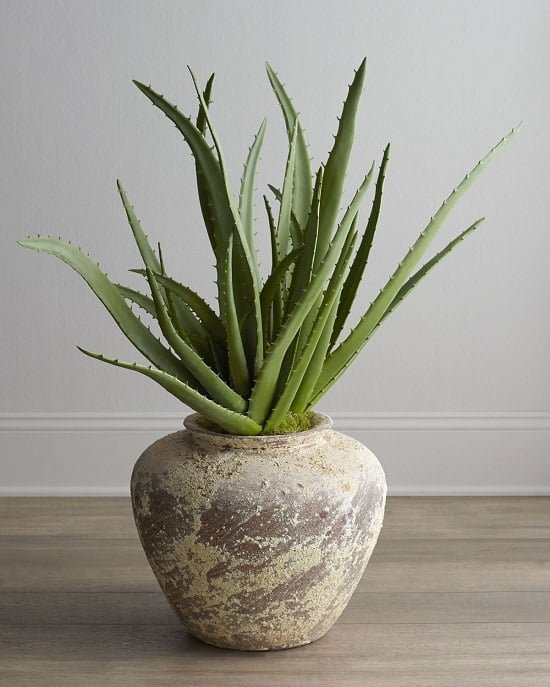
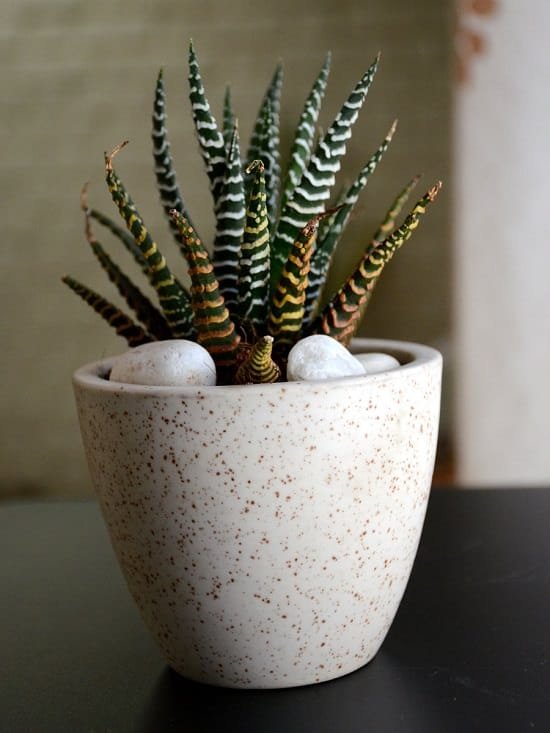
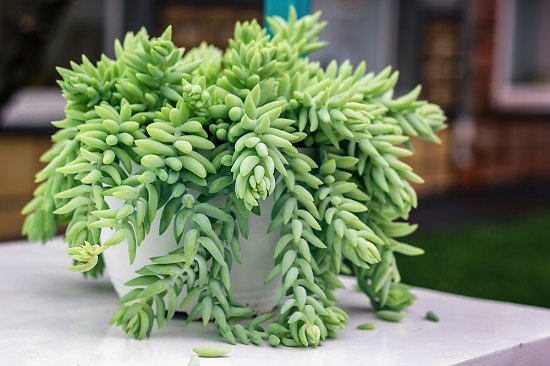
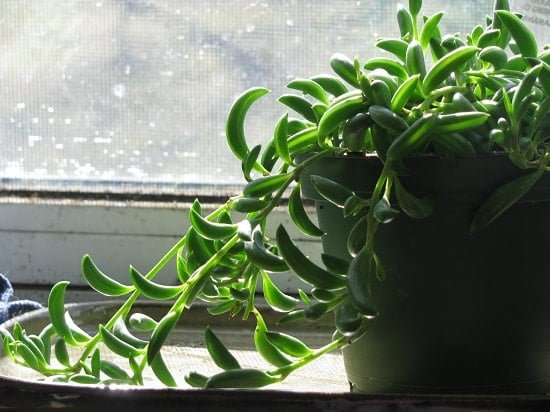

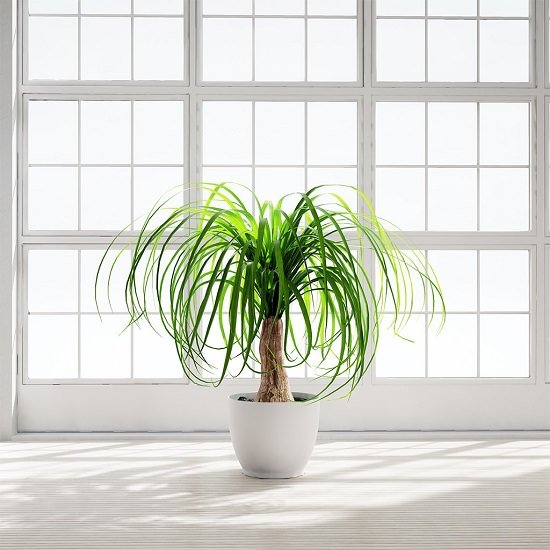
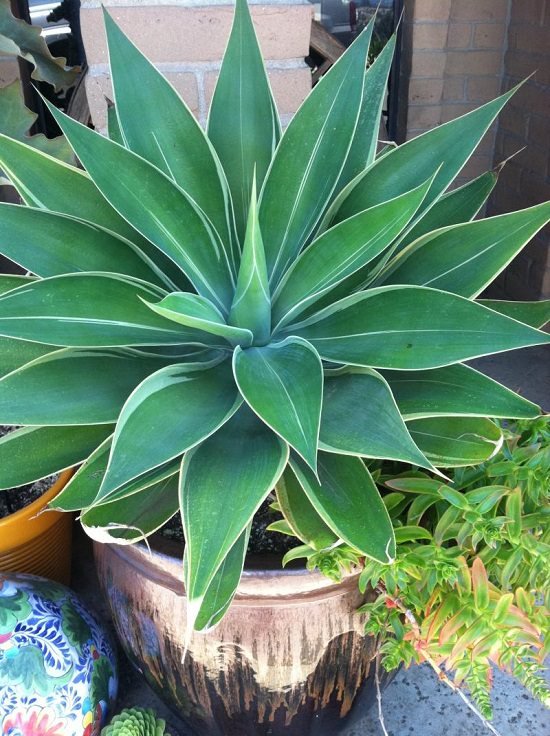
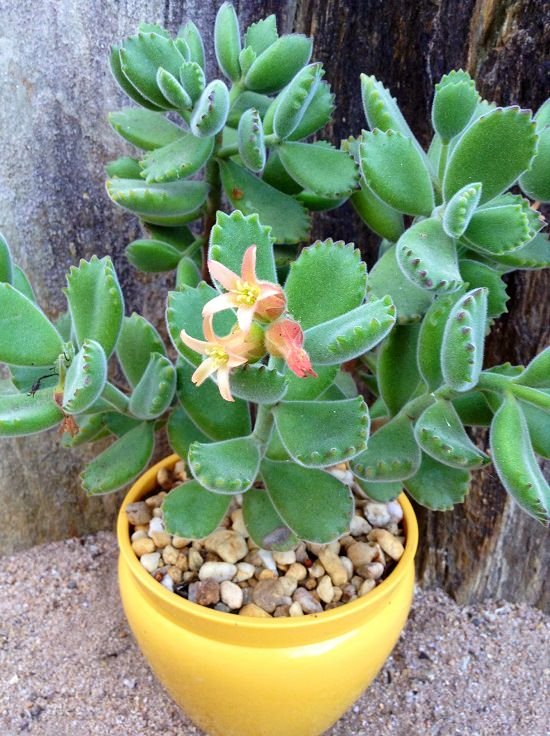


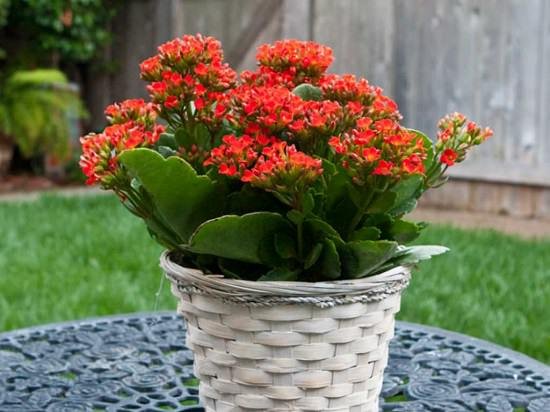


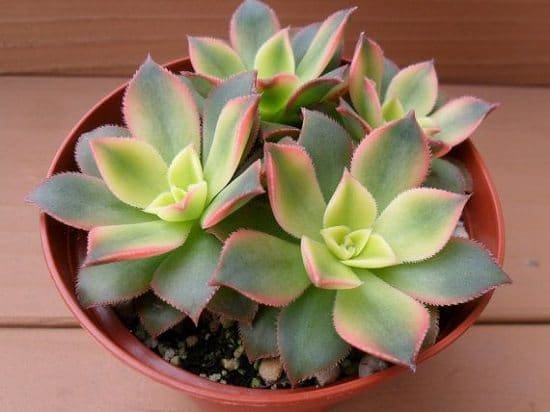



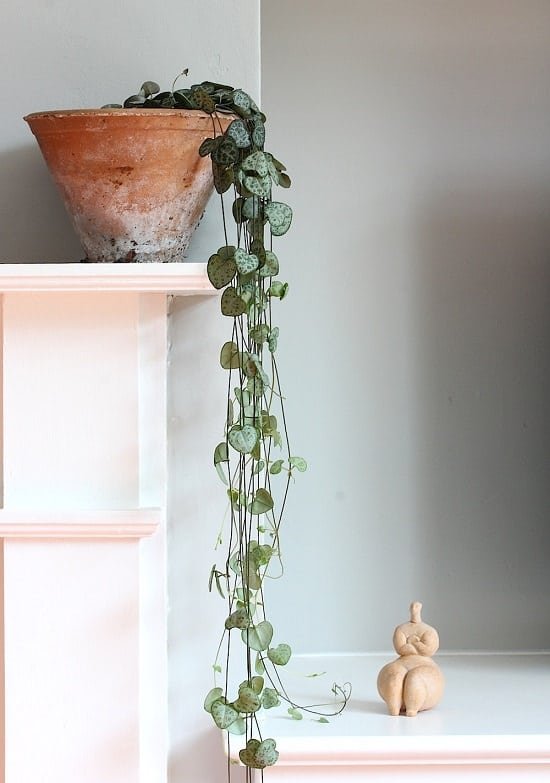

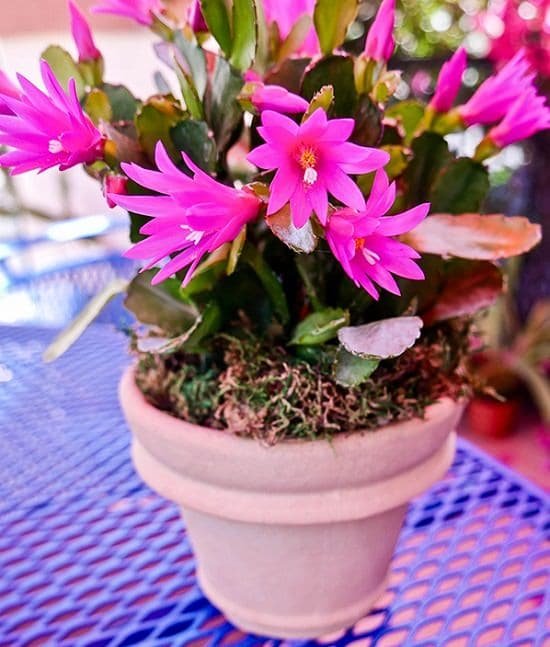
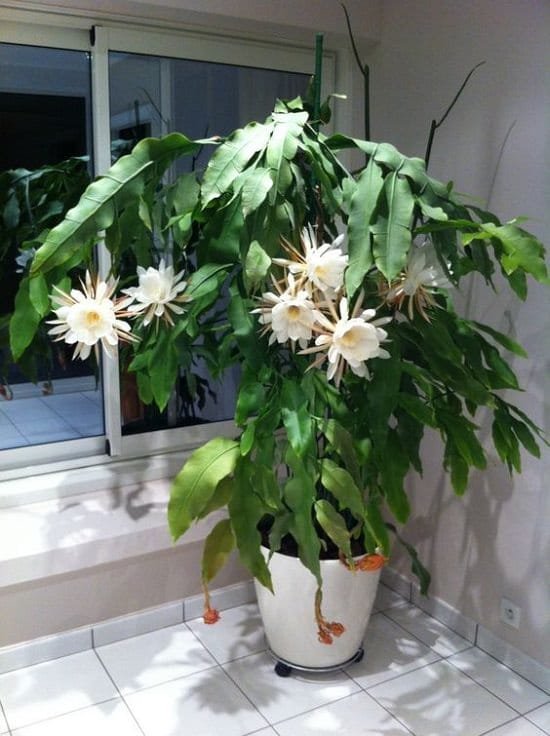

Another real cactus you forgot to add: Gymnocalycium Michanovichi. It bloomed regularly on my north exposure window
Those are so pretty I’m debating on buying the string of pearls one!
This pretty pair of bloomers bridges the part shade to sun gap with non-stop flowers. Lobelia Sky Blue Erinus opens blossoms in soft blue, offering an eye-catching contrast to Sunsatia Lemon nemesia and its lemon yellow flowers. Both plants tend to stop flowering when night temps stay above 70 F. If this occurs, give plants a light trim to promote fresh, branching growth when temps cool off. Both plants grow 6″ to 10″ tall and spread at least 12″ to 16″. Choose these bloomers to fill the spiller role in containers or make a handsome hanging basket.